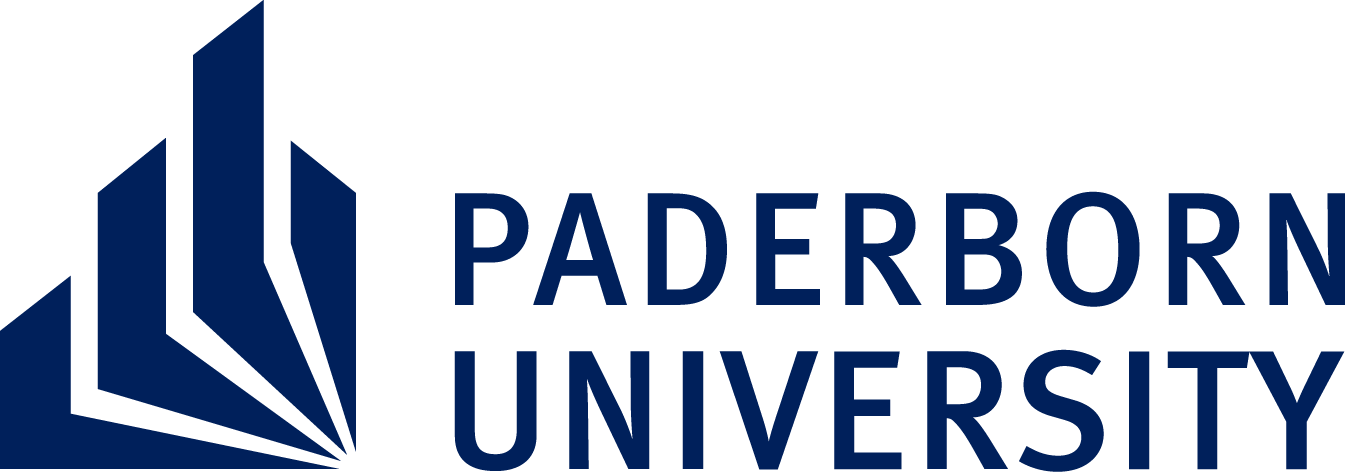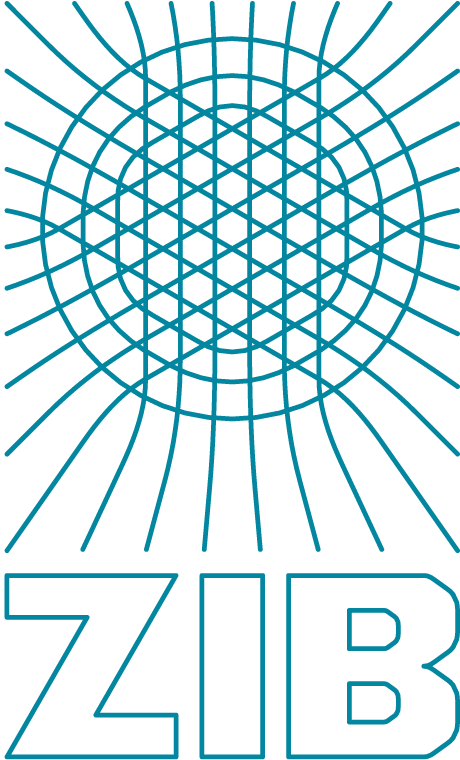HighPerMeshes Consortium
The HighPerMeshes consortium is formed by four German institutions and one associated project partner:
- Paderborn University
- Friedrich-Alexander Universität Erlangen-Nürnberg
- Fraunhofer ITWM
- Konrad-Zuse-Zentrum für Informationstechnik Berlin
- Computer Simulation Technology
Paderborn University

Paderborn University (UPB) will be represented within the project by the Paderborn Center for Parallel Computing (PC²). PC² was founded in 1991 as an interdisciplinary institute of UPB and since then has established a reputation as a competence centre for parallel and distributed computing and innovative computer architecture. Two research groups whose heads are affiliated with PC² will contribute to the project.
The High-Performance IT Systems group headed by Prof. Christian Plessl contributes expertise in the area of design methods and application of FPGA-based custom computing technology to scientific computing problems.
The Theoretical Electrical Engineering Group headed by Prof. Jens Förstner contributes expertise in the area of the theoretical description and simulation of photonic and optoelectronic systems. The key expertise of the group is to combine advance material models with state-of-the-art numerical simulation methods of electromagnetic fields.
The role of UPB in the HighPerMeshes project is:
- project coordination
- providing a computational nanophotonics code and case studies
- contribution to design and validation of domain-specific language
- develop domain-specific code generation and optimization strategies for FPGAs
- validate results with FPGAs
Contact
Prof. Dr. Christian Plessl
Prof. Dr. Jens Förstner
Friedrich-Alexander Universität Erlangen-Nürnberg

Friedrich-Alexander University Erlangen-Nürnberg (FAU) is a strong research university and one of the largest universities in Germany, with 40,000 students and 4,000 academic staff (including over 570 professors).
HighPerMeshes’ project partner at FAU is the Chair of Hardware/Software Co-Design. Here, the Architecture and Compiler Design (ACD) group headed by Dr. Frank Hannig contributes expert knowledge in the fields of domain-specific computing and programming languages, as well as compilation techniques for parallel processor architectures including accelerators.
The role of FAU in the HighPerMeshes project is:
- design of a domain-specific compiler front-end and intermediate representation
- development of compiler infrastructure for transformation and optimization
- development of OpenCL code generation backend
Contact
Fraunhofer ITWM

The Fraunhofer Institute for Industrial Mathematics ITWM at Kaiserslautern is one of currently 66 institutes of the Fraunhofer-Gesellschaft, an application-oriented research organization. Fraunhofer ITWM focuses on the development of mathematical applications for industry, technology and economy. Mathematical approaches to practical challenges are the specific competences of the institute and complement knowledge in engineering and economics in an optimal way.
The Competence Center High Performance Computing contributes expertise in the development and application of innovative new software tools like the communication library GPI-2 for the efficient and highly scalable implementation of parallel software.
The role of ITWM in the HighPerMeshes project is:
- development of code transformations for GPI-2 based interprocess communication and synchronization
- development of problem partitioning strategies for large-scale clusters
- providing task models for load balancing within a compute node and within the cluster
Contact
Dr. Daniel Grünewald
Dr. Franz-Josef Pfreundt
Konrad-Zuse-Zentrum für Informationstechnik Berlin

The Zuse Institute Berlin (ZIB) is a non-university research institute of the State of Berlin. In close interdisciplinary cooperation with the Berlin universities and scientific institutions Zuse Institute implements research and development in the field of information technology with a particular focus on application-oriented algorithmic mathematics and practical computer science. ZIB also provides high-performance computer capacity as an accompanying service.
In the Supercomputing department advanced programming tools and flexible runtime environments for complex application settings are developed targeting emerging technologies like heterogeneous many-core systems.
The Numerical Mathematics department develops efficient modelling, simulation, and optimization tools and algorithms for challenging application problems from medicine, systems biology, molecular dynamics and nano-optical systems.
The role of ZIB in the HighPerMeshes project is:
- providing the Kaskade FE toolbox reference code and case studies
- contribution to design and validation of domain-specific language
- develop domain-specific code generation and optimization strategies for multi- and many-cores (Xeon, Xeon Phi) and GPU (OpenCL)
- design of intermediate representation for communication and task offloading
- validate results with multi- and many-cores
Contact
Dr. Thomas Steinke
Dr. Martin Weiser
Computer Simulation Technology AG (associated project partner)

CST is a market leader in delivering 3D electromagnetic (EM) field simulation tools through a global network of sales and support staff and representatives. CST develops CST STUDIO SUITE, a package of high-performance software for the simulation of EM fields in all frequency bands. Its growing success is based on a combination of leading edge technology, a user-friendly interface and knowledgeable support staff. CST solutions are used by market leaders in a diverse range of industries, including aerospace, automotive, defense, electronics, healthcare and telecommunications. CST is part of SIMULIA, a Dassault Systèmes brand. Further information about CST is available on the web at www.cst.com.
The role of CST in the HighPerMeshes project is:
- contribute to definition of requirements for domain-specific language and compilation framework
- provide insights into customer demand and technological developments
- validation of results with CST Microwave Studio